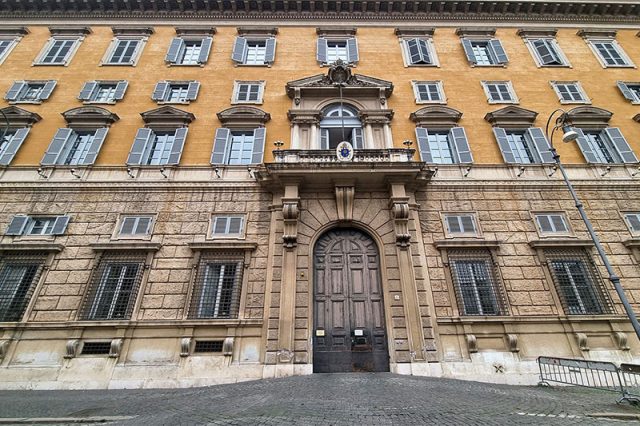ROME— The Vatican’s Dicastery for the Doctrine of the Faith has accepted the decree of a bishop approving the spiritual activities of a shrine at the site of alleged Marian apparition “Our Lady of the Rock” in southern Italy.
It is the DDF’s fourth public pronouncement related to alleged apparitions since issuing norms for the discernment of “alleged supernatural phenomena” in May. The new regulations stated the local bishop must consult and receive final approval from the Vatican after investigating and judging alleged apparitions and connected devotions.
In a July 5 letter published Tuesday, the DDF said it had taken note of Bishop Francesco Oliva’s “positive report on the spiritual good that is taking place” at the Shrine of the Madonna dello Scoglio (“Our Lady of the Rock”) in the southern Italian diocese of Locri-Gerace and confirmed the bishop’s declaration that nothing prevents Catholics from visiting and participating in its devotions and liturgies.
The dicastery stressed that while it affirmed the bishop’s recognition of the spiritual experience at the shrine, it should be in no way construed as a judgment of the supernatural quality of the alleged apparitions of “Our Lady of the Rock.”
The letter is signed by DDF prefect Cardinal Víctor Manuel Fernández and was approved by Pope Francis in a July 5 audience.
The Marian shrine in Santa Domenica, a tiny village in the Italian region of Calabria, was built around a boulder, the site of Mary’s alleged appearances to 18-year-old Cosimo Fragomeni from May 11–14, 1968, as he was returning home from working in the fields.
Officially constructed in 2016, the sanctuary has come to be known locally as “the little Lourdes of Calabria” and has seen an ever-growing number of pilgrims and visitors, many of whom come seeking physical healing.
Fragomeni is still living and has recounted his alleged mystical experiences in approximately 30 letters. He receives visitors for brief personal meetings twice a week.
The DDF instructed the local bishop, who has jurisdiction over the shrine, to be clear in his decree that approval of the spiritual activity of the shrine does “not imply any judgment — either positive or negative — on the lives of the persons involved in this case” and any further messages from the seer should be made public only with his approval.
The Vatican’s doctrinal office confirmed the “nihil obstat” judgment of the diocesan bishop given that, as he informed them, “no critical or risky elements have emerged, much less problems of obvious gravity” at the alleged Marian apparition site, but “instead, there are signs of grace and spiritual conversion.”
According to the May 17 norms, a “nihil obstat” judgment means: “Without expressing any certainty about the supernatural authenticity of the phenomenon itself, many signs of the action of the Holy Spirit are acknowledged ‘in the midst’ of a given spiritual experience, and no aspects that are particularly critical or risky have been detected, at least so far.”
In its letter, the DDF quoted Oliva’s letter to the dicastery, which explained that “the fruits of Christian life in those who frequent the Rock [i.e., the shrine] are evident, such as the existence of the spirit of prayer, conversions, some vocations to the priesthood and religious life, testimonies of charity, as well as a healthy devotion and other spiritual fruits.”
“In the secularized world in which we live, in which so many spend their lives without any reference to transcendence, the pilgrims who approach the Shrine of the Rock are a powerful sign of faith,” the DDF’s letter said.
“Their presence before the Virgin, who for them becomes a clear expression of the Lord’s mercy, is a way of acknowledging their own inadequacy to carry out the labors of life and their ardent need and desire for God,” it continued.
“In such a truly precious context of faith, a renewed proclamation of the kerygma can continue to enlighten and enrich this experience of the Spirit.”










